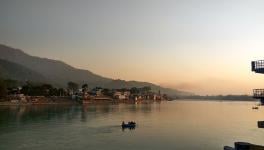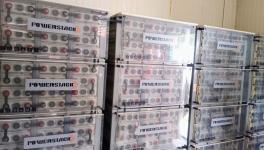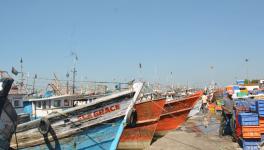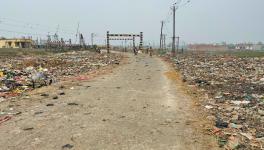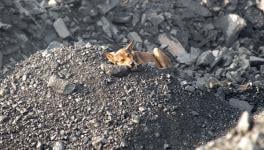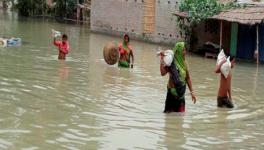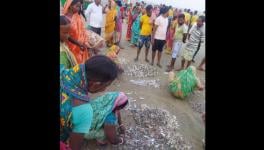Bihar Fishermen Caught Between ‘Upar Bijli, Neeche Machli’
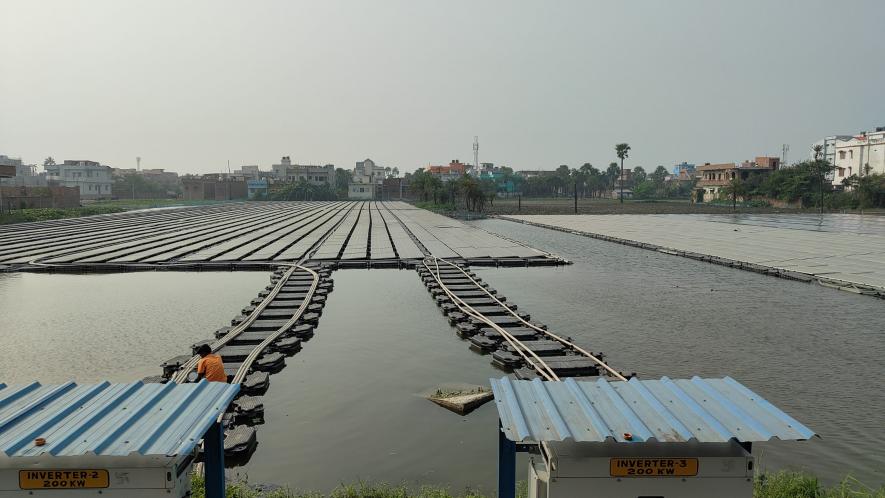
The floating solar power unit in Darbhanga, Bihar.
Darbhanga/Patna: The Bihar government’s ambitious plan to use waterbodies for sustainable development by generating green energy along with fish farming has apparently been successful so far. However, farmers seem to be clueless about the new techniques of fish catching as they don’t enter the water fearing electrocution, and the hazardous impact on aquatic life, if any.
To promote pisciculture, two floating solar power units were commissioned in around six to seven-acre ponds in the flood-prone districts of Darbhanga and Supaul in Mithila and Koshi regions in March 2022 on trial basis.
The plants have more than 4,000 solar modules each, with a capability to produce 505 megawatt peak (MWp) electricity. Each unit is expected to generate 2 MW of power everyday befitting a population base of 10,000.
Chandan Sharma, the plant-in-charge in Darbhanga, claims that the maximum power production from the plant was at 9.8 MWh in summers and 3 MGh in winters (because of lesser radiation). The plant, according to its control unit’s records, has generated 3805.18 MWh of green and clean energy since its commissioning.
The two units have been commissioned and are operated by a private firm called AVAADA Energy, which transmits power from its plants to Bihar Renewable Energy Development Agency (BREDA), a government body that works for the promotion and development of schemes on non-conventional energy sources. BREDA supplies power to local consumers through the North Bihar Power Distribution Company Limited.
The plants, as per AVAADA officials, will annually produce 2.7 million units and help reduce 64, 125 tonnes of CO2 in its lifecycle of 25 years. The company has a power purchase agreement with the BREDA for 25 years.
Asked why did they choose water bodies for power production from solar energy, officials explain that the solar panels will be cooled by water, ensuring their efficiency and increased power production.
The floating solar power plants will produce green and clean energy and simultaneously promoting fish farming, they tell NewsClick.
As the project’s name, Upar Bijli, Neeche Machli (Electricity above, fish below), suggests, fish farming is also in progress in the two units.
However, fishermen who won farming tenders are unable to enter the water because of lack of space and the threat of electrocution despite insulated power cables.
“I won the tender in January last year on some kind of barter system—I do farming and clean the pond and the solar plates in return,” Mohan Sahni, awarded the Darbhanga unit tender, tells NewsClick.
“But fishes hide inside the solar plates and we can’t enter the pond fearing electrocution due to the possibility of exposed cables. We have no other technique to lure fishes to the nets,” he says.
“The fisheries department must take note of it and come up with some technology to facilitate fish catching,” Sahni adds.
“At least, half the pond should be left for fishermen,” he says.
The unit is spread across seven acres with only two acres left for fish farming.
Sharma, however, claims the pond is “completely safe” though he admits the “possibility of leakage in the cables”, below the water surface.
“Therefore, we don’t allow fishermen to enter the pond as we cannot risk their lives,” he adds.
Asked about the plant’s hazardous impact, if any, on the ecology and the growth of aquatic life, he says no such extensive study has been done so far, “the plant is not apparently harming the fish”.
“We have already conducted several trials to show the fishery department that the plant is not affecting fish production,” he claims.
Sahni too said that fish production hasn’t been affected but he hasn’t used fresh fish seeds after winning the tender. “Fish seeds take, at least, three years to grow. Therefore, I can’t comment on the growth of aquatic life.”
No official from the departments concerned were available for comments on the concern about any ecological hazard.
Experts were also unable to comment citing the “absence of any independent study”.
“The project is in its trial stage, and there is no independent study on its possible hazards. So, it’s difficult to make any observation as of now,” Ishtiyaq Ahmad, a Patna-based expert famous for experimenting with solar power in agricultural farming tells NewsClick.
However, he says that it has been observed that birds, honey bees or insects don’t make nests or hives below solar power panels. “But is it same with floating solar power panels? This is something to be studied both by the government and independent researchers.”
Ahmad flags another concern on the viability of such smaller units. “Though the units have been commissioned in flood-prone areas, floodwater no more recharges groundwater because of embankments and river silting. The state lacks canal networks. Groundwater level continues to deplete.”
Deep borewell drilling and submersible boring system are a common site even in flood-prone regions, he says. “To make the floating panels function throughout the year, the government is dependent on groundwater, which will deplete further, especially in summers. Therefore, these smaller units are not viable in the long term.”
Asked what if panels are used in rivers, he says even major rivers, such as Ganges, Koshi, Baghmati, Gandak, etc., dry up in summer because they have lost water-holding capacity due to silting.
“The government hasn’t taken serious steps over the years to clean and desilt rivers so that they can hold floodwater and help recharge groundwater,” he says.
As per the state’s renewable energy policy of 2017, Bihar had set a target of generating 3,433 MW of renewable energy by 2022, including 2,969 MW from solar power plants alone. However, the plants generate only 386 MW of total renewable energy.
Get the latest reports & analysis with people's perspective on Protests, movements & deep analytical videos, discussions of the current affairs in your Telegram app. Subscribe to NewsClick's Telegram channel & get Real-Time updates on stories, as they get published on our website.










